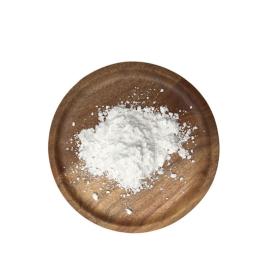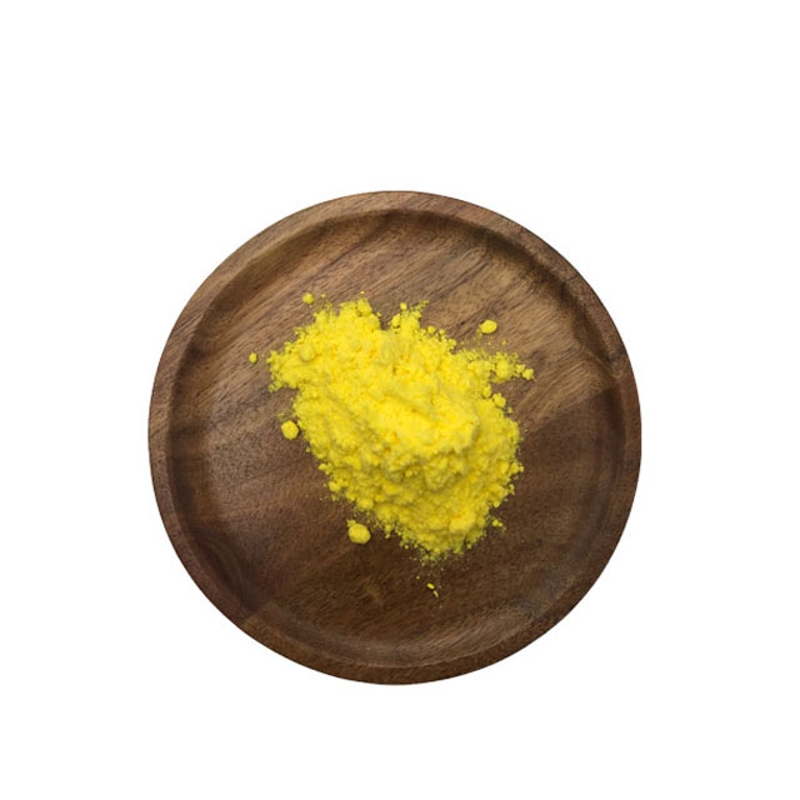Talk about the "bone safety" management related to breast cancer treatment.
-
Last Update: 2020-07-30
-
Source: Internet
-
Author: User
Search more information of high quality chemicals, good prices and reliable suppliers, visit
www.echemi.com
China's breast cancer diagnosis and treatment results, 5-year survival rate of 83.20% ranked first among the 18 major cancers, some urban areas 5-year survival rate even exceeded the average in Europe and the United States. !----at the same time, breast cancer due to non-cancer causes to survive, we can see that the elderly breast cancer patients cardiovascular death than breast cancer itself caused by disease;based on this, we should not only focus on disease, but also take into account the patient-centered comprehensive management, including early prevention, high-risk screening, standardized diagnosis and treatment of acute illness, and enter the slow-motion period of scientific accompanying disease management of all-round full-cycle scientific.today, let's talk about the management of "bone safety" in breast cancer treatment. Professor ye Songqing,, Director of Oncology Surgery, Fujian Provincial Hospital, Deputy Director of Oncology Surgery, China Anti-Cancer Association Breast Cancer Professional Committee, CSCO Breast Cancer Expert Committee Member, Member of the Breast Cancer Group of the Oncologists Branch of the Chinese Physicians Association, member of the Standing Committee of the Committee of Experts on Oncology Prevention and Control of the Cross-Strait Medical and Health Exchange Association.breast cancer treatment increasebone loss, bone safety management should be "two-pronged" natural menopause of women bone density decreased by about 1.9% per year, postmenopausal women osteoporosis up to 25% to 50%, and various treatments for breast cancer, including endocrine and chemotherapy, further aggravated bone loss, fracture risk increased, relative to healthy women fracture risk increased by 1.55 times.in clinical practice, we can observe that patients treated with ovarian function inhibitors, after 2 years of treatment with Goscherin, bone density was reduced by about 10.5 percent compared to the baseline, while premenopausal patients undergoing chemotherapy significantly reduced bone density in the whole hip, lumbar spine, and femur neck.in addition, in patients receiving AI-type medication, the decrease in endogenous estrogen levels promotes bone-breaking cell formation and bone absorption, and bone density decreases, leading to osteoporosis.related studies show that 60% to 70% of postmenopausal breast cancer patients with AI drugs experience varying degrees of bone and joint pain and stiffness, of which 74% occur in the first three months of AI treatment, 6% to 7% occur within a week of treatment, and the good hair areas are mostly in the wrists/hands, ankles/feet, knees, back ridges and shoulders and elbows.joint pain reduced the compliance of treatment, about 20% to 30% of patients due to joint pain and stop medicine., a British study showed that a 5-year aumcision had a 17.6 per cent risk of fractures.fractures are mainly caused in the chest, lumbar vertebrae, the far end of the tibia and the upper end of the femur, mostly in the twisting of the body, holding or opening the window some daily activities.Guide to The Comprehensive Management of Breast Cancer Follow-up and Accompanying Diseases (2019) (2019), it is recommended to choose drugs that have a less significant impact on bone safety to reduce bone safety.steroid AI drugs have a unique androgen-like structure, compared with nonsteroidal AI drugs have less impact on bone safety, it is recommended that high-risk patients can choose steroid AI drug therapy.for bone safety management of breast cancer, we should "two-pronged", comprehensive assessment and management.current guidelines at home and abroad recommend BMD as the main indicator for evaluating bone loss and osteoporosis, WHO recommends the Risk of Fracture Quantitative Evaluation Tool (FRAX), based on age, clinical risk factors, femur neck BMD (T value) and other factors to comprehensively predict the risk of fractures caused by osteoporosis in women with health menopause within 10 years.authoritative guidelines: How can bisphosphonates be safer to use? The 2019 edition of the China Anticancer Association's Breast Cancer Guidelines and Guidelines states that the use of bisphosphonates should be considered in accordance with BMD test results, the 2020 CSCO guidelines recommend that bone density monitoring should be routinely performed before (baseline) and during medication, and that bone density monitoring should be carried out once every 6 months, with a maximum interval of not more than 1 year. patients with T-score below -2.5 (for osteoporosis), should start using bisphosphonates, T-score patients between -2.5 and 1.0 (for bone mass reduction), consider using bisphosphonates, bisphonatetreatment is different from the use of bone removal and treatment of bone metastasis, can be used once every 3 to 6 months, and adjusted to the drug for 3 to 5 years according to changes in T-score after treatment. The common adverse reactions to bisphosphonates are mild gastrointestinal discomfort, such as heartburn, nausea, vomiting, etc. may have cold-like symptoms for the first time, such as fever, myosine, joint pain, headache, etc. less common complications include conjunctivitis, vitimeitis and sdurjunitis. on jaw bone necrosis, a new study in the United States reported a cumulative total of more than 10,000 patients using bisphosphonates, jaw necrosis rate of about 5%, the upper jaw embryo formation, its blood supply is rich in the jaw bone, necrosis rate is lower than the jaw bone (jaw necrosis risk factor and mechanism see Figure 2). patients to carry out oral operations such as tooth extraction, before and after three months of operation is not recommended for bisphosphonate treatment. studies confirm that bisphosphonates may have the effect of preventing bone metastasis, and may potentially prevent visceral metastasis, inhibit tumor cell diffusion, immersion and adhere to bone matrix, and have anti-tumor effect. a number of clinical studies and Meta analysis results show that, on the basis of standard radiotherapy, chemotherapy, endocrine therapy after breast cancer, the addition of bisphosphonate treatment for postmenopausal patients can significantly reduce the risk of recurrence metastasis, distant metastasis and bone metastasis, and significantly reduce the risk of breast cancer-related death, the current ASCO guidelines recommend bisphonate as postmenopausal (including premenopausal use of ovarian function inhibitors patients) breast cancer assisted endocrine treatment. the management of muscle joint pain during AI treatment, the management of muscle joint pain in the course of AI treatment, first of all should identify the diagnosis, muscle joint pain is caused by AI drugs, or by other causes such as rheumatism, rheumatism or tumor metastasis-related factors, AI caused by muscle joint pain patients after the symptoms, a considerable number of patients with the use of AI extension, symptoms may gradually reduce. muscle joint pain can also be alleviated by physical methods such as proper exercise. some patients, if muscle joint pain caused by the use of one AI, can be replaced with another AI, can make more than 50% of patients with muscle joint pain symptoms relief. severe symptoms, the corresponding treatment of symptoms, such as the application of nonsteroidal anti-inflammatory drugs. 2016 SABCS reports that the antidepressant losistin can significantly improve skeletal muscle symptoms caused by Class AI drugs, and SWOG 1200 studies have shown that 12 weeks of acupuncture-assisted therapy significantly improves joint pain and stiffness in early breast cancer patients caused by aromatase inhibitors, and has the potential to improve compliance and prognosis in breast cancer patients. How do supplement with calcium and vitamin D? Calcium and vitamin D supplementation can help reduce the risk of osteoporosis and fractures. studies have shown that high levels of calcium can reduce the risk of osteoporosis by 20 percent, and calcium combined with vitamin D can reduce the risk of hip fractures by 18 percent in postmenopausal women. currently do not recommend no reason for universal vitamin D supplementation, the body itself contains enough vitamin D, but it needs to go through the sun to be converted into calcium-friendly activated vitamin D. need to be supplemented by some of the high-risk factors for insufficient vitamin D intake, including: the elderly, the dark-skinned, the obese, the under-exposed, the osteoporosis, the long-term chronic intestinal disease, etc. small-junction estrogen is a "double-edged sword" that increases the risk of breast cancer, but inhibits bone-breaking cells while maintaining bone density. breast cancer treatment to reduce estrogen levels, increase the risk of osteoporosis, fracture risk and bone joint pain and other bone safety issues, affecting treatment compliance. should assess the risk of bone loss and osteoporosis in patients at an early stage and strengthen multidisciplinary cooperation with orthopaedics and endocrinology to develop appropriate scientific management programs to improve quality of life and improve long-term efficacy. Ye Songqing Source: Tumor Information !-- Content Presentation Ends - !-- To Determine Whether the Login Ends.
This article is an English version of an article which is originally in the Chinese language on echemi.com and is provided for information purposes only.
This website makes no representation or warranty of any kind, either expressed or implied, as to the accuracy, completeness ownership or reliability of
the article or any translations thereof. If you have any concerns or complaints relating to the article, please send an email, providing a detailed
description of the concern or complaint, to
service@echemi.com. A staff member will contact you within 5 working days. Once verified, infringing content
will be removed immediately.







